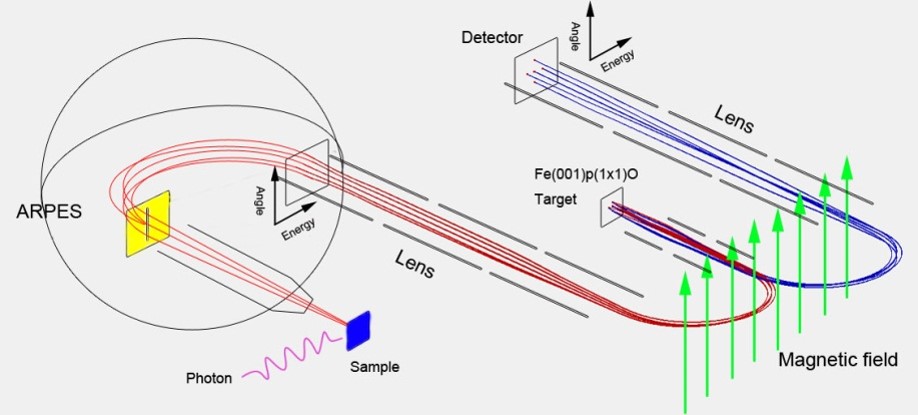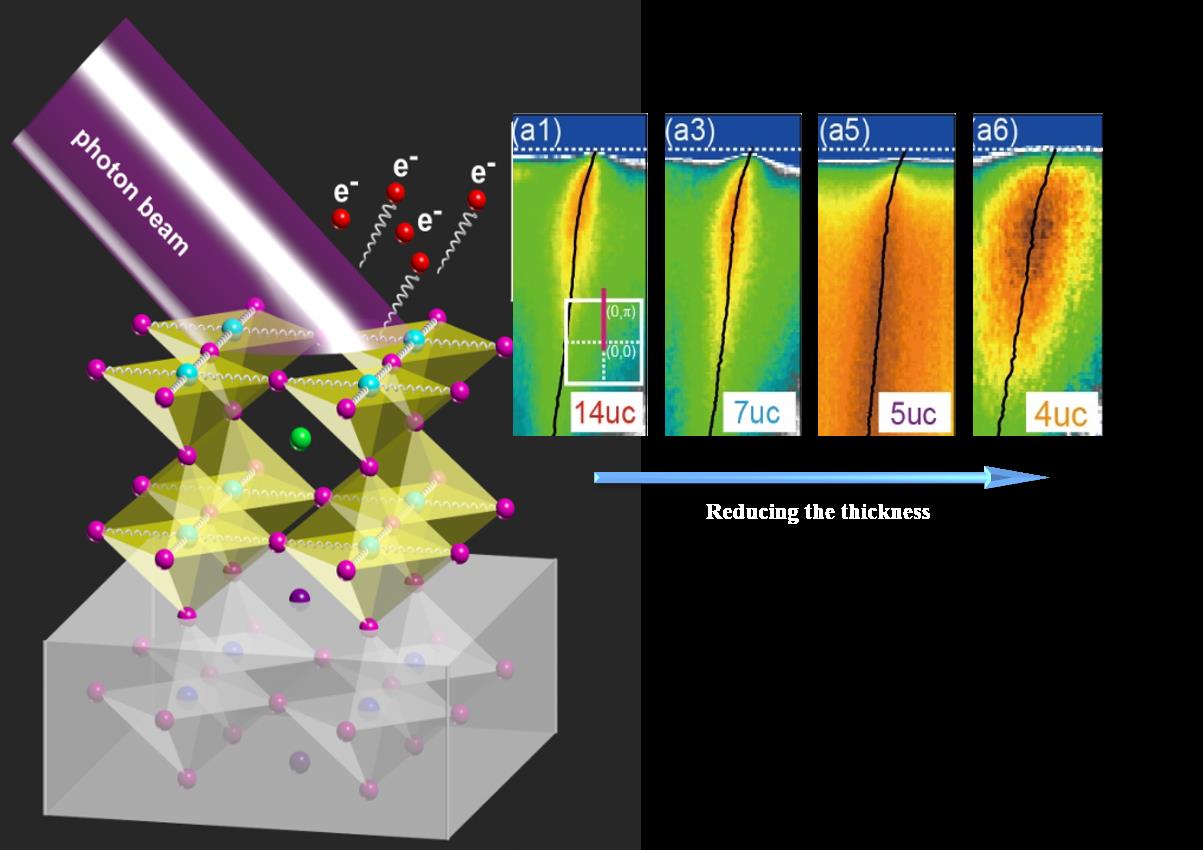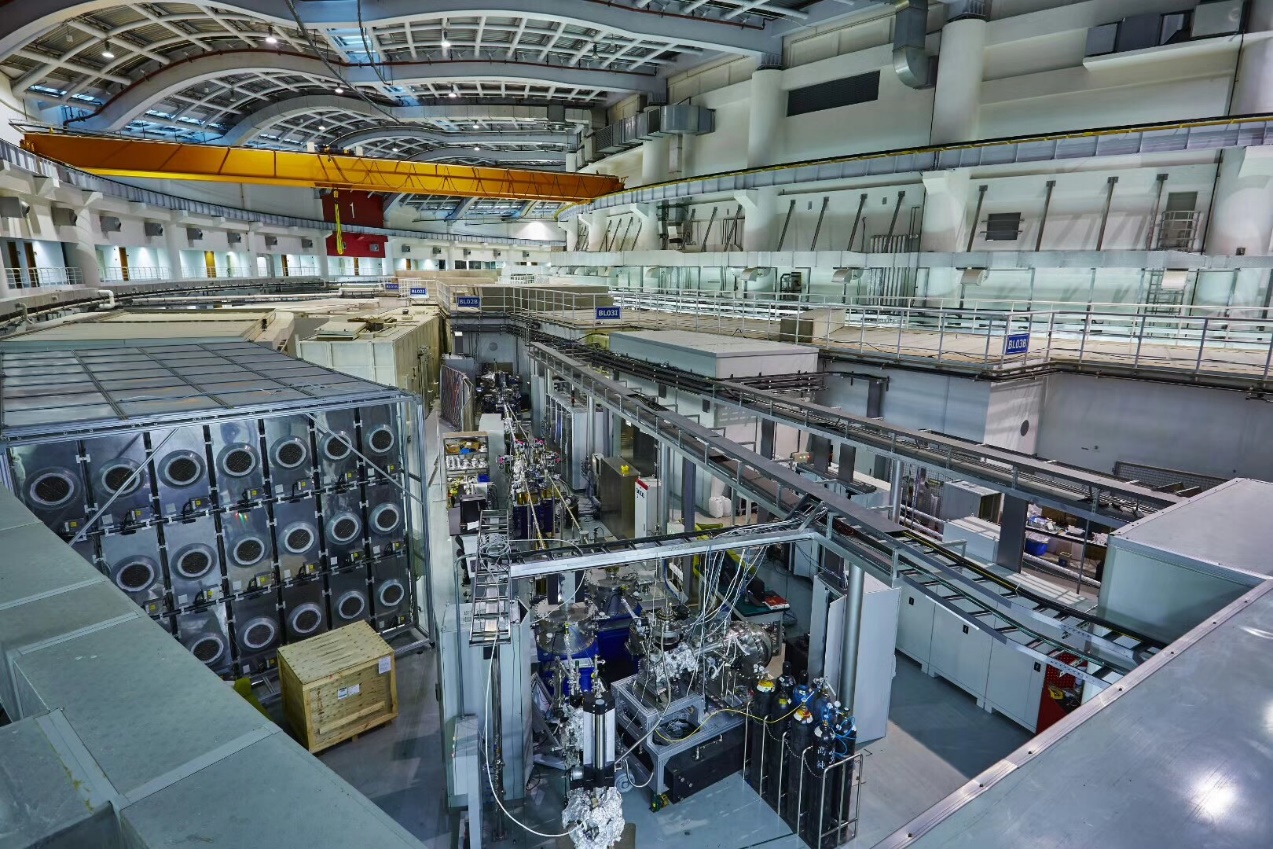Research Area of in-situ characterization of Electronic Structure
Date:09-06-2017 | 【Print】 【close】
Novel properties of materials are determined by electronic states and interaction between electrons. Research on physical properties of materials in microscale is based on the characterization in multi-degree of freedom of electron including energy, momentum, orbit, spin.
Research Area of in-situ characterization of Electronic Structure is based by “Shanghai Integrated Platform for Materials of Energy and Environment (SiP·ME2)” founded by National Natural Science Foundation of China (NSFC). The aim of this area is to develop advanced synchrotron-based characterization methods and apply them to a broad range of fundamental and applicable fields, such as superconductivity, magnetic, energy storage, catalytic and electronic structure of new functional materials.
The main research projects:
1. Development of In Situ X - ray Spectroscopy technology
With the rapid development of synchrotron radiation technology, X-ray spectroscopy based on synchrotron light sources has become one of the most important research methods on the electronic structures of complex functional materials. However, traditional spectroscopy methods, especially in the soft X-ray energy region, must be carried out under ultra-high vacuum conditions, which severely limits the application of these techniques. Our research activities include developing the synchrotron-based experimental techniques in ambient pressure and even in atmosphere, crossing the barriers of UHV in traditional experiments. The ultimate goal is to explore the electronic structure of the materials in real environment and working condition with higher accuracy, that provides a new insight into the trend of basic physical properties of materials under variable conditions.
2. spintronics
Using our initial ultra-efficient spin-resolution photoelectron spectrometer, we are able to measure the electronic band structure with spin information for investigating the formation mechanism of novel quantum properties on surfaces, at interfaces and in bulk solids. The ultimate goal of the study is to explore the mechanism of unconventional superconductors and quantum anomaly Hall system. Measuring the spin-electron state of the ferromagnetic / superconducting, topological insulator / superconducting heterojunction, and the spin relaxation process of the spin-polarized electrons in the superconductor, is to lay the physical foundation for understanding the application of the new interface superconducting system and superconducting spin electronics. By measuring the spin electronic states of ferromagnetic / topological insulators interface, we study the coupling between ferromagnetic and topological insulation, hoping to discover higher temperature or even room temperature quantum anomaly Hall system.
3. New type quantum information materials
By the rapid development of information industry, the semiconductor device units get reach to the limit of its physical and energy consumption. Using the properties of spin and topology of electronic band structure in the new type quantum materials, is an important way to fabricate new type of low energy loss electronic devices. We mainly use spectroscopy of advanced light source based on synchrotron radiation source, such as X-ray magnetic double-color performance spectrum, spin-resolved photoelectron spectroscopy, to study spin-polarized electronic structure in new quantum materials and to provide a new material system for ultra-low energy consumption and non-volatile electronic information devices.
4.Strongly Associated Electronic System
We mainly use in situ angle-resolved photoelectron spectroscopy, X-ray magnetic element dichroism and other ultra-high vacuum and synchrotron radiation spectroscopy techniques to study novel electronic states and magnetic properties in strongly interacting electronic systems, including the strong coupling thin films synthesized by molecular beam epitaxy, heterojunction and artificial superstructures; novel quantum information single crystals by other methods such as charge density wave materials, unconventional superconductors and materials with novel topological properties are synthesized.
5. Mechanism of Surface Catalytic Reaction
We use X-ray Spectroscopy based on synchrotron, Raman vibration spectrum and other in situ advanced interface characterization technology and simulation of interface reaction kinetics, to study microscopic mechanism of surface chemistry and catalytic process of novel energy materials, such as carbon dioxide gas phase degradation and electrocatalytic degradation; growth mechanism and applications of two-dimensional materials (such as graphene, WS2, etc.); cheap oxide electrode in light, electrolysis of water in the micro-process and catalytic activity.
6. Reaction Mechanism of Energy Storage Materials
We use synchrotron-based X-ray Spectroscopy to study the electronic structure and and reaction principles of energy conversion/ storage materials. The main research activities include: lithium storage-transport mechanism and energy level regulation of the new metal oxide electrode materials; the formation mechanism of the solid-electrolyte interface of the lithium-ion batteries and the solid-solid interface of novel all solid batteries; controllable reactions on the surface of electrodes in new metal-air batteries; optimization of redox reaction and catalytic properties of in metal-air batteries and fuel cells.
In Situ Electronic Structure Direction build up a research team of 15 stuff, including 5 researchers, 1 associate researcher, 2 in the Chinese Academy of Sciences "Hundred Talents Program", and about 30 graduate students and other stuffs.

Curved Soft X-ray Beam

Vacuum Ultraviolet EPU Beam Line





